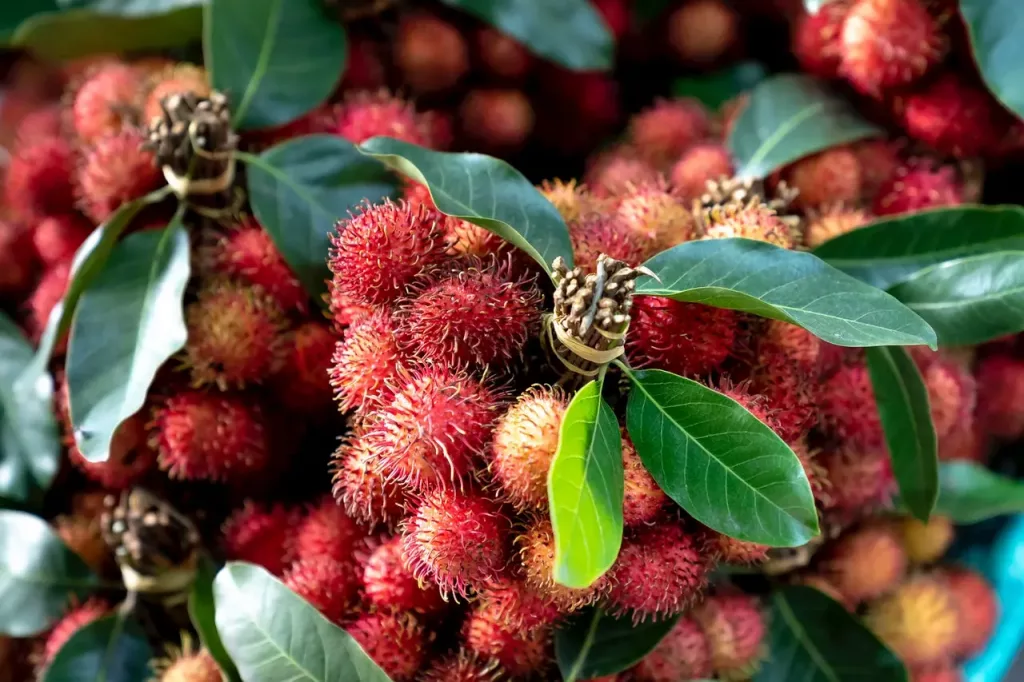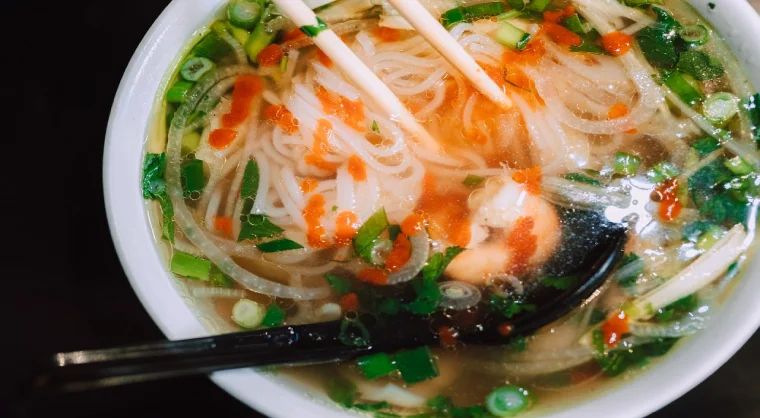It’s a spiky red fruit abundant in tropical Asian countries and is famous for its delicious taste — and it’s not lychee.
Nope, we’re talking about the rambutan fruit, the lesser-known cousin of lychee.
Rambutan and lychees are often confused as the same fruit. They’re red and spiky, as well as tropical fruits associated with summers in Asia. However, there are more differences than similarities between these two fruits and the rambutan fruit has many unique qualities just like its distant cousin.
Rambutans (Nephelium lappanceum) is a fruit native to countries in Southeast Asia like Indonesia, Malaysia, Thailand and the Philippines, as well as Australia. These hairy-looking and colorful fruit balls grow in clusters on evergreen trees. Its name “rambutan” refers to the spikes of the fruit. Unlike the durian fruit, its spikes aren’t sharp; they are pliable and fleshy.
As mentioned, the rambutan fruit is related to the lychee fruit. Both look the same when peeled; they have translucent white flesh, contain seeds in the middle and have a delicious and creamy taste. They also both go green to red as they ripen and are difficult to open.
But that’s where all the similarities end.
Rambutan vs. Lychee: Settling this Fruit Debate
Rambutan and lychee may seem similar but the size emphasizes their differences. The rambutan is a bigger fruit, with most rambutans a size of a golf ball. On the other hand, lychee is a little smaller.
The taste of the rambutan fruit is creamier and richer with a hint of sourness. On the other hand, lychee’s white translucent flesh is not as creamy and sweet. It has a more floral taster, as well as a crisper bite. Think of it this way: rambutan’s flavor is similar to grapes but with a hint of strawberry, sweet and acidic. Plus, it’s not as sweet as lychee and has a pleasant fragrance that completes most Asian dishes.
Now that we’ve settled the rambutan vs. lychee debate, it’s time to focus on the rambutan fruit. What is it good for? What are its health benefits? And how do you eat this Asian fruit?
The Health Benefits of Rambutan

The rambutan fruit is rich in different vitamins, minerals and antioxidants, which are essential in your daily nutrition.
For starters, the fruit is rich in Vitamin C, an essential vitamin that boosts your immune system, as well as helps your body absorb iron more easily. Vitamin C also doubles as an antioxidant, which protects your body’s cells from damage. To achieve 50 percent of your daily vitamin C needs, eat five to six rambutans every day.
Rambutan is also rich in folate, which is the vitamin in charge of DNA duplication and healthy cell division. Women who wished to be pregnant or avoid birth defects are recommended to consume at least 400 micrograms of folate.
This Asian fruit is also full of potassium, an essential mineral that helps your muscles contract, heart beat and kidneys function.
Rambutans also empower your body with the following health benefits:
- Lower risk of cancer. As mentioned, the rambutan fruit is rich in Vitamin C, which is a potent antioxidant. Healthy consumptions of rambutan empower your body to fight off free radicals, aka waste products that damage your body cells. A reduction in cell damage automatically equates to a reduced risk of cancer.
- Better digestive health. Daily consumption of rambutan can help your digestive system be more resilient. This Asian fruit offers dietary fiber in both insoluble and soluble forms. The rambutan fruit’s dietary fiber also reduces your risk for constipation by preventing impaction and adding bulk to your stool.
- Aid in weight loss. The soluble fiber in the rambutan fruit is water-soluble so it dissolves into a gel-like substance, which slows down your digestion. This results in greater feelings of fullness and reduced appetite.
How to Eat Rambutan
At first glance, the rambutan fruit may seem intimidating due to its “spiky” skin that seems difficult to open. Once you understand the process, however, these fruits are easy to peel. The skin isn’t difficult to open and the fuzzy spines are harmless. Like a cherry, the rambutan has a pit. You can eat the fruit raw as long as you avoid the pit.
A note of caution: although the rambutan fruit’s flesh is safe for consumption, its seed and skin contain toxic substances. You can safely handle them but refrain from eating the skin and seeds to prevent consuming any toxins.
If you want to include rambutan in your diet, consider the following ways:
- Add the fruit to your ice cream
- Incorporate rambutan into a smoothie
- Make a fruit salad with rambutan
- Make rambutan jam
- Try rambutan sorbet
- Freeze rambutans and them to your cocktails
Rambutan is the sweeter cousin of lychee; it’s a fruit you should include in your list of daily fruit consumption. Let us know how you like the rambutan fruit!





